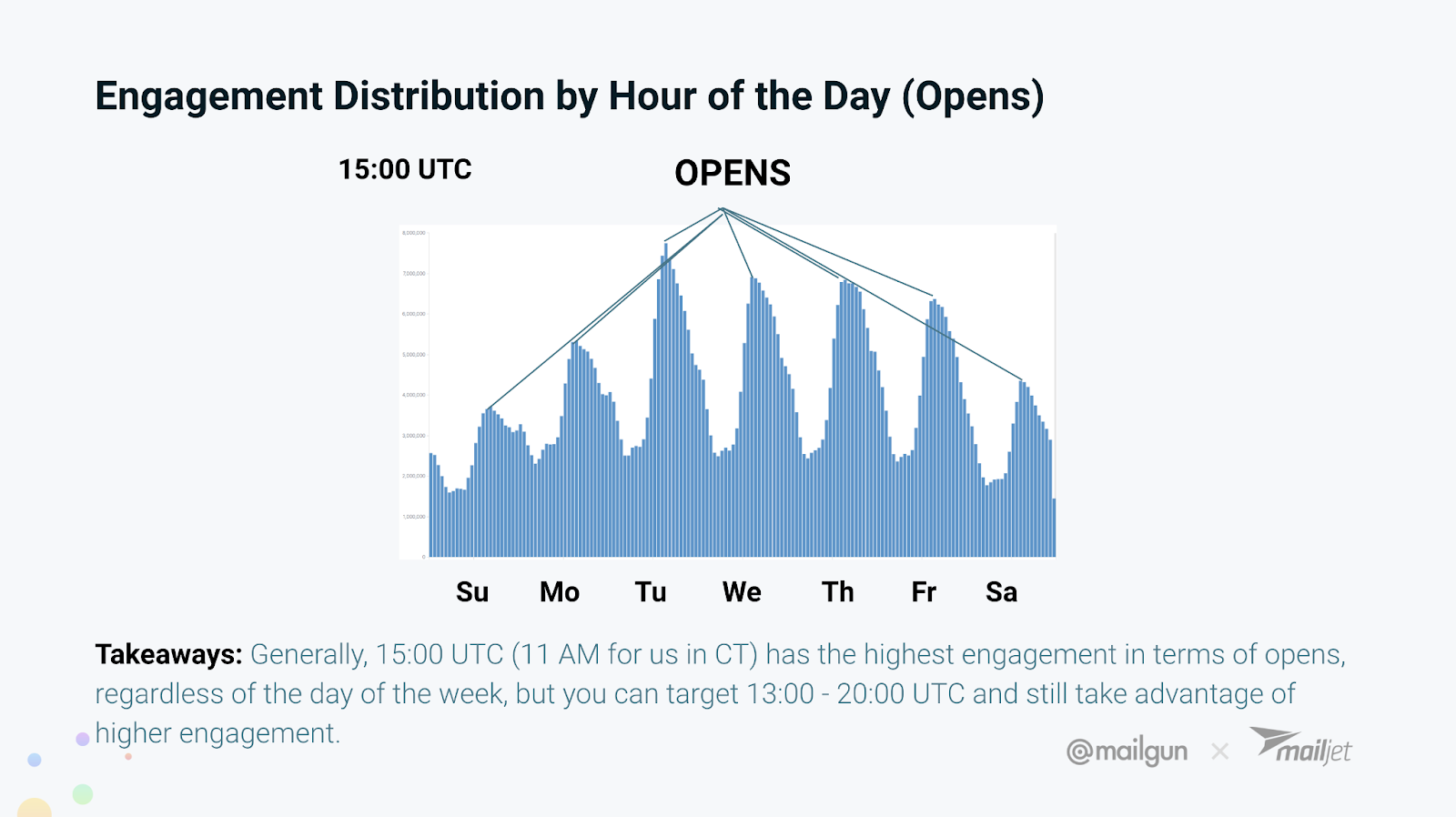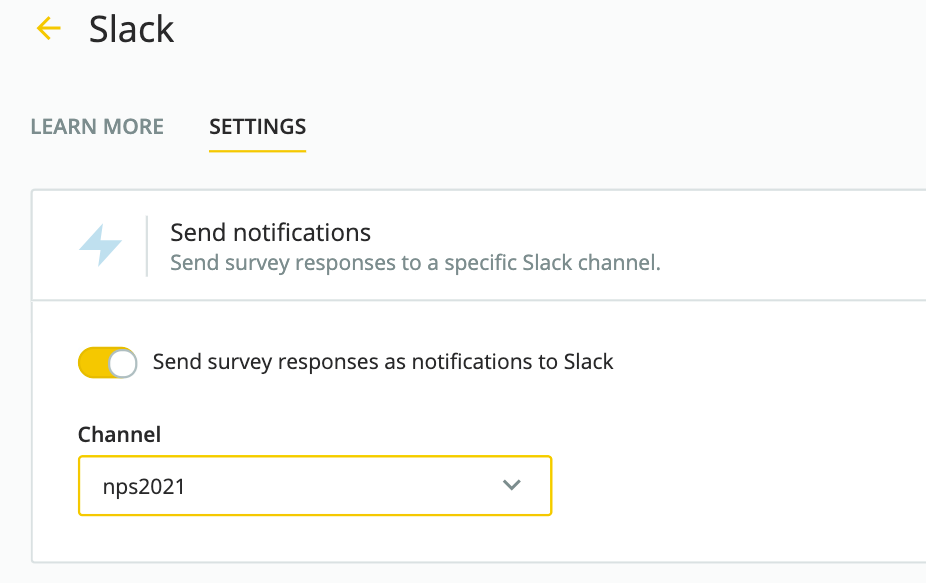Customer satisfaction is the key to brand success.
But to keep customer satisfaction high, you need to talk to your customers. And there’s no better way to do that than with NPS surveys.
NPS email surveys are the easiest and quickest way to verify your customers’ feelings about your product. They’re based on a simple NPS question:
The question may differ if you choose to go with transactional NPS instead of the classic relational approach.
Based on their responses, the participants are divided into detractors, passives, and promoters. You can calculate your score with a calculator or right within the Survicate results panel.
You should analyze the results to gauge customer loyalty, predict future growth, and develop your product based on customer feedback instead of assumptions.
In terms of distributing NPS email surveys, this can be done in many different ways—as long as you catch your users on their preferred channels at the right time. And since email is still the most successful marketing communication channel, giving NPS email special attention makes perfect sense.
In this article, you’ll find all you need to craft your perfect NPS email:
- how to boost the NPS email click rate,
- tips to increase NPS survey response rates,
- subject line best practices and examples,
- NPS email survey examples to get you inspired.
NPS email best practices—how to make your email survey successful
With just a few tricks, you can improve the effectiveness of your NPS email survey.

Let’s take a look at them.
1. Segment your respondents (and get the right sample size)
You must know the saying, “There are as many opinions as there are people.” This also applies to your customers.
Still, to draw actionable conclusions from surveys, you need to look for patterns. Before you send the NPS email, split the recipients into groups.
You can segment your customers based on their branch (i.e., marketers versus customer success specialists), joining date (new customers vs. those who have been with you for over 6 months), or any other factor that matters for your business.
If you use Survicate, each email survey will have special merge tags that let you identify respondents. You will notice how NPS scores differ from segment to segment. You might find out, for example, that while marketers tend to be your promoters, customer support is much less enthusiastic about your product. Use such insights for further investigation, feature prioritization, and marketing campaigns.
Before you send out your NPS email, make sure that you’ve got the right sample size.
There is no “right sample size number.” Especially in customer experience, where you should pay attention to every single answer.
But keep in mind that the bigger the sample size, the more statistically significant your results will be.
If you want to be super careful, use a sample size formula to help you assess your ideal number.
2. Embed the survey into your NPS email to boost response rates
A big sample size won’t do you any favors if your response rates are low.
If you want to encourage people to answer your surveys, embedding the first question in the email body is a good idea. It doesn’t require your customers to click links and leave their inboxes, so you’re not creating friction and disrupting the customer journey.
With Survicate, you can easily embed your NPS surveys in emails by copying and pasting a little bit of pre-generated HTML code.

Another way to boost the survey response rate is to show one question at a time instead of a long list of questions.
It will make the surveys feel shorter and easier for your respondents. Just click through the template below:
3. Use friendly and straightforward language in your NPS email
If your Net Promoter Score email is complex or confusing, chances are your users will ignore it.
Go for simplicity and stick to the same tone of voice that applies to your entire marketing communication. If it’s conversational and friendly, then make sure your NPS emails reflect it.
The same rule applies to survey questions, and it’s double as important if you’re going to embed the first question in the email. Use simple language, and be careful with your follow-up questions to avoid response bias, which occurs when poorly designed survey questions lead to inaccurate or false answers.
If you’re unsure about question design, you can start by using one of Survicate’s free survey templates.
4. Make your NPS email survey personal
We’ve grown accustomed to personalization. 72% of consumers say they only respond to personalized messaging, and this includes emails.
While writing your Net Promoter Score email copy, the least you can do is include your respondent’s first name to make it more appealing. With Survicate, you can also update survey questions with respondents’ previous answers or their attributes, like city or purchases.
After all, saying:
Hi Tommy, quick question. How likely are you to recommend our brand to your friends and family?
sounds way better than:
Hello, could you tell us how likely you are to recommend our brand to your friends and family?
Doesn’t it?
Many NPS tools, including Survicate, let you send multilingual surveys. Use this feature to appeal to international audiences. While English usually does the trick, many respondents might be more inclined to take a survey in their mother tongue.
5. Send your NPS email surveys from a person, not brand
Sending emails from an individual’s account can also positively impact the email open rates and NPS survey completion rates.
There are two reasons for that:
- A name and a face behind a message make it more friendly and personal;
- It lets people know they can engage in a dialogue. Sending your email from an inaccessible-sounding address (such as “noreply@companyname.com”) kills the conversation. And you don’t run NPS surveys because you don’t want to talk to your clients, right?
But an email coming from a person is just half the battle won. Make sure the actual email content feels human. You don’t want to sound like a surveying machine. Be personal, genuine, and pepper in some humor.
Also, make sure the email explains why you’re running the survey. Write a short introduction explaining that you’re reaching out to understand your users’ needs better.
6. Update your email list
Before you send NPS email surveys, update your email list.
Sending emails to an old list can skew the results—you’ll have the wrong idea about your sample size. Plus, your open and response rates will drop.
Low open rates indicate that your survey respondents don’t wish to communicate with you. This will harm the deliverability of your future emails. in the worst-case scenario, mailbox algorithms will interpret your NPS email campaign as spam and block it.
For this reason, make sure that:
- your email list consists of an active audience only;
- you keep building a solid, permission-based subscriber list where your recipients have expressly agreed to receive your emails (to stay safe from spam filters or GDPR-related penalties);
- your emails are engaging enough to activate your subscribers—you don’t want your mailing list to keep shrinking.
7. Always add a ‘thank you’ note
Customers fill in NPS email surveys out of courtesy or because they like you. They are not obliged to do so.
Whenever someone completes your survey, send them a “thank you” message to show appreciation.
Survicate allows you to add a “thank you” note directly to your NPS survey. It will be displayed as soon as your respondent completes it.

8. Offer incentives in your NPS email
Getting people to respond to your email surveys is not always easy.
One way of approaching this challenge is by offering a reward for taking a survey.
It can be as simple as a $10 Amazon voucher. You can also consider giving out rewards related to your product. A coupon code, extra credits, a free month of subscription—it depends on your business and promotional budget.
Incentives are great to activate a lukewarm audience. Just remember to use them wisely.
An incentive might provoke response bias. A respondent who’s just received a gift from you is much more likely to provide positive customer feedback—even if they hadn’t felt the same way just a second ago.
Consider the following practice: send the first NPS email with no incentive and only offer a prize to those users who don’t respond organically.

9. Find the right time for your email
As the old saying goes, timing is everything. It’s no different for your NPS email survey.
Before you click “send” on your Net Promoter Score email, do some research to find the best time to send it.
As far as email open rates go, the best hour and day depends on whether you’re a B2C or B2B business.
Hubspot reports that for B2C emails, there isn’t one magical time of the week when you can get the most eyes on your message. However, you can start by testing out weekday evenings and weekends. For B2B emails, it’s best to give Tuesday, Wednesday, or Thursday a shot.

But don’t just take these rules of thumb for granted. If you’ve sent marketing emails or email surveys before, look at your previous response rates. Are there any hours or days when you’ve seen the best results?
If you have an international audience, things get a little more complicated. For best results, you should send emails based on the time zones. Most CRMs, like Hubspot, let you schedule an email according to time zones automatically. If you have a large segment of clients with no geolocation data, dive into your analytics tool and try to find the average best time.
Then, it’s a matter of testing to find the right spot! Roll up your sleeves and experiment.

10. A/B test your NPS email
In a nutshell, an A/B test is when you send out two versions of your message (so that each recipient sees only one version) to assess which one brings better results.
There are several factors you can take on a test drive, such as:
- Email copy. For instance, write version A of your NPS email in a formal tone of voice, and make version B more laid-back.
- Subject lines. Run an A/B test to see which subject line triggers more opens. Your subject lines need to be distinct from each other and stand out in the recipients’ inboxes.
- Time & day. As we mentioned above, to get the most responses, you need to send your email when your customers are online. We recommend running A/B tests regularly to make sure that timing works in your favor.
11. Use mobile-friendly NPS survey software
Imagine a person on a bus or at a cafe, casually scrolling through their mailbox only to come across your survey. They have some time to kill, but they don’t feel like making much effort for you.
If all it takes to complete the survey is one click, then you might be in for an excellent survey response rate.
The number of people who primarily use mobile devices to check their email keeps growing. People tend to lurk into their inboxes on the go throughout the day. For this reason, choose the right survey software that makes it easy to fill out surveys on a mobile phone.
If you use Survicate, you don’t have to worry about that. All our email surveys are perfectly responsive, regardless of screen size.
12. Add follow-up questions to understand the reasons for each answer
This NPS survey best practice is recommended by its creators. After all, knowing your Net Promoter Score (and benchmarking the NPS against your competition) is just the beginning. You must also find out the reason behind it.
Here’s where follow-up open-ended questions come into play. They will give you concrete, actionable, honest feedback that will fuel your customer experience program.
You can ask NPS detractors (i.e., the respondents who give you a score between 0 and 6) for suggestions on how to improve.

As for passive customers (those who gave you a 7 or 8 score, so a relatively positive one), ask them what would turn their chosen NPS score into a 9 or 10 next time around:

Finally, you can ask your NPS promoters (i.e., 9 or 10 respondents) about what exactly it is that they love about your brand:

And if you’re feeling frisky, you can ask if they would actually like to recommend your company by leaving you a review!

Just remember, don’t use too many open-ended questions to avoid survey fatigue. One at a time is perfectly okay.
13. Make sure your customer success team follows up on low scores
Your customer success team should pay special attention to NPS detractors—that is, customers who are unhappy with your service.
To avoid negative word of mouth spreading across online, always try to reach out to them and make things up. And that’s a job for your customer success team.
Since it’s always best to react to feedback in real-time, consider implementing an outreach process, like the one below.
Step 1
Set up alerts for scores between 0 and 6—make sure that your customer success team is notified immediately, for instance, on Slack. With Survicate, you can set the alerts up in your survey panel.

Step 2
Review the scores and answers to the NPS follow-up questions (if applicable).
Step 3
Make sure that one of your customer success reps reaches out to unhappy customers, especially if they shared negative customer feedback. Outreach should show empathy and promise improvements or offer to reimburse them for their inconvenience.
If the situation calls for it and the client agrees, schedule a call to learn the details.
Don’t leave your negative survey responses unattended. They can come back and bite you in the form of a high churn rate or a reputation crisis if the customer takes it online.
14. Send a follow-up NPS email
If your first NPS response rate is low, don’t give up. Send a follow-up in a few days.
Ensure that the copy and subject line are friendly and non-obtrusive, and don’t overdo it with the number of emails you follow up with (two or three will suffice).
Remember about the power of personalization. Consider sending a separate follow-up email to those who opened the email but didn’t respond and those who missed the email altogether.
NPS email subject lines—best practices and ideas
The first factor that will impact the success of your NPS email is the open rate. Let’s take a quick look at some tips to make your subject lines irresistible.
1. Add the recipient’s name
We mentioned personalization earlier in this post—it’s just as applicable to your subject line. Use your respondent’s first name to make it sound more friendly and to trigger their interest, for example,
Tony, we’ve got a little favor to ask you
According to Campaign Monitor, users are 26% more likely to open emails with personalized subject lines.
2. Keep your NPS email subject line short
Long subject lines tend to get cut off in inboxes, especially on mobile devices.
Keep your subject lines under 50 characters to make sure they display correctly. You can also get email previews in most CRM and email tools.
3. Create a sense of importance or urgency
As NPS surveys are recurring and limited in nature (i.e., they’re run every few months for a certain number of days), trigger your recipient’s reaction by creating a sense of importance.
Provoke a sense of urgency in your audience with a clock-is-ticking kind of subject line, such as:
Only 3 days left to fill out our NPS survey!
4. Use humor or a distinct tone of voice
People receive hundreds of emails a day, so try to get yours noticed.
Align your voice with your branding, and add some twists and humor. You can never go wrong with a series of jokes like in the email series below.

5. Prioritize your NPS email subject lines’ clarity
Email subject lines that are clear to the recipient have a whopping 541% higher response rate than vague ones.
To best understand what ‘clarity’ means, take a look at the example below:
Vague subject line: “Hannah, we need your opinion!”
Clear subject line: “Hannah, care to fill out a quick survey?”
Ready-to-grab NPS email survey templates
Here are two messages you could try out for your NPS email survey. You can adjust them as you please or take them for an A/B-test spin!
NPS email survey example #1:
Hi [name],
Thank you for your recent purchase. We truly appreciate having you as a customer!
We always want to provide the absolute best service, so we have a small favor to ask.
Would you spare a moment to fill out our NPS survey? It would mean the world to us and will only take a few seconds (promise🤞). Just click on the relevant score below:
All best,
[Name & surname]
Head of Customer Success at [Your company]
NPS email survey example #2:
Hi [name],
Keeping our customers happy is our number one priority. And to do that, we need to know what you think of us in the first place.
Since you’ve been using our services for some time now, would you spare 2 minutes to answer a short survey?
One more thing: if you fill it in before [date and hour], we will send you a $10 Amazon voucher as a thank you.
Thanks a million!
All best,
[Name & surname]
Head of Customer Success at [Your company]
Summary
NPS email surveys are the best way to improve your customer experience program and turn loyal customers into your fans. However, you need to follow NPS email best practices to reap the full benefits of measuring Net Promoter Score.
Here are a few things that will change the way you run email NPS email surveys:
- figure out the best time and day to send your NPS email surveys;
- add follow-up questions to your NPS survey to understand why customers evaluate you the way they do;
- create catchy copy and email subject lines;
- personalize your email and send it from a team member’s account instead of an anonymous company account.
If you catch your users at the right point of their customer journey, your customer experience will improve, and so will your response rates.
To make the most of your NPS email surveys, we recommend using an NPS tool such as Survicate. With Survicate's generous freemium plan, you can use the NPS survey template and collect as many responses as you can for 7 days. Upgrade your subscription plan to supplement your feedback collection with other customer satisfaction metrics such as CSAT.
So, ready to find out your NPS score? Set up your Survicate account right now and have your first survey ready to go in a few minutes.
We’re keeping our fingers crossed🤞!
Originally published by Kasia Kowalska and Anna Rubkiewicz.

.webp)






.svg)
.svg)
.svg)

.svg)


.svg)







.svg)




.svg)

















.svg)






























.svg)

.svg)
.svg)

.svg)



.svg)






.svg)

.svg)

.png)







